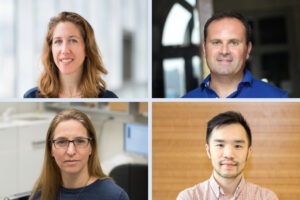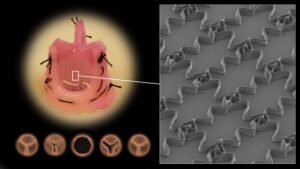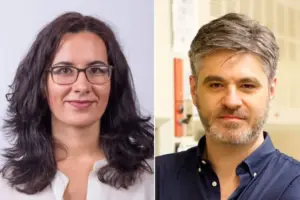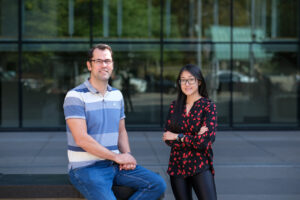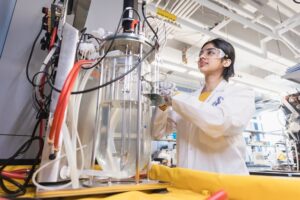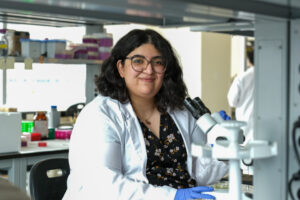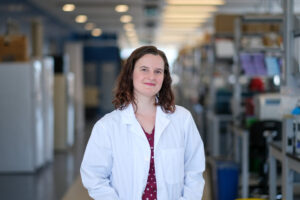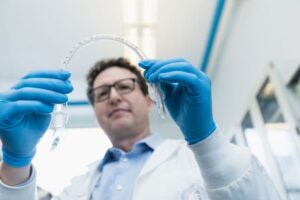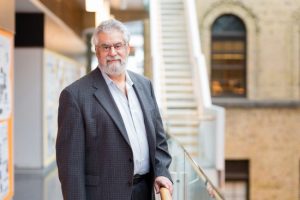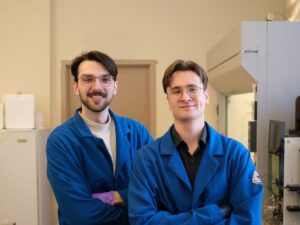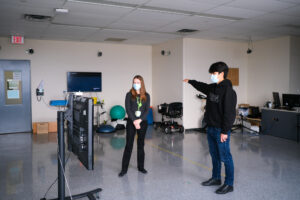Research News and Stories
Explore the latest news, stories, and groundbreaking research happening at the Institute of Biomedical Engineering. Stay updated on innovative projects, impactful discoveries, and the achievements of our talented students, faculty, and alumni shaping the future of biomedical science and engineering.
Quick Navigation
Four Biomedical Engineering Faculty Members Secure CIHR Funding for Research Projects
Four esteemed faculty members from the Institute Biomedical Engineering (BME) at the University of Toronto have successfully secured funding from the Canadian Institutes of Health Research (CIHR) through the Project Grant Program’s fall 2023 funding cycle. The CIHR funding will support their cutting-edge research projects aimed at advancing health-related knowledge and outcomes.
Revolutionizing Microbial Single-Cell Sequencing: DoTA-seq Unveils a Simple Yet Powerful Method
In a recent study, a research team led by Dr. Freeman Lan has developed a method for single-cell genetic profiling of microbes. The findings, published in Nature Methods, introduce a robust and easily adaptable droplet microfluidics workflow named DoTA-seq (Droplet Microfluidics for Targeted Amplification Sequencing), providing a scalable solution for studying single-cell heterogeneity in microbial populations.
Dr. Aaron Wheeler receives Ricardo Aroca Award for contributions in Analytical Chemistry
Dr. Aaron Wheeler has recently been honoured with the Ricardo Aroca Award. This esteemed award is bestowed upon a scientist residing in Canada who has made outstanding contributions to the realm of analytical chemistry while actively engaged in research within the country.
Researchers use generative AI to design new viral vector subspecies for gene therapy delivery
Researchers at the University of Toronto’s Faculty of Applied Science and Engineering have successfully utilized an artificial intelligence (AI) framework to redesign a crucial protein involved in the delivery of gene therapy.
Dr. Milica Radisic inducted as U.S. National Academy of Inventors (NAI) Fellow
Dr. Milica Radisic has been elected as a 2023 Fellow of US National Academy of Inventors (NAI), this achievement underscores her exceptional contributions to advancing research and positively impacting real-world applications.
With heart-on-a-chip, researchers study genetic mutation underlying cardiac muscle disease
Researchers at the University of Toronto and its partner hospitals have led the development of a heart-on-a-chip device to study the effects of a genetic mutation that causes dilated cardiomyopathy, a heart muscle disease that impairs blood flow throughout the body.
Dr. Milica Radisic Elected as Fellow of Biomaterials Science and Engineering (FBSE)
Dr. Milica Radisic has been elected as a Fellow of Biomaterials Science and Engineering (FBSE), the highest honor bestowed by the global biomaterials community on exceptional scientists.
‘DNA origami’ may bring researchers one step closer to a cancer vaccine
BME professor Leo Chou creates DNA nanostructures that can serve as a platform to deliver instructions to a body’s immune cells in a way that would elicit an effective response towards a disease. His team has developed a new way to visualize 3D nanostructures made of human DNA.
Engineering soft connective tissues with biomimetic mechanical properties
A team of researchers at the University of Toronto, led by Professor Craig Simmons, has introduced a novel method to engineer soft connective tissues with prescribed mechanical properties similar to those of native tissues. This finding, published in the journal Advanced Functional Materials, can propel the generation of more realistic tissues and organs for regenerative medicine in the future.
Donnelly Centre to House New Self-Driving Lab to Innovate Next-Generation Human Tissue Models
The Donnelly Centre for Cellular and Biomolecular Research is home to a new self-driving lab (SDL), borne out of a $200 million grant from the Canada First Research Excellence Fund to the Acceleration Consortium.
Wearable medical device redefines cardiovascular monitoring
A team of researchers led by Professor Daniel Franklin (BME) unveiled a cutting-edge wearable medical device designed to revolutionize cardiovascular monitoring. This innovative device integrates multiple sensory modalities to provide a comprehensive assessment of hemodynamic status, surpassing conventional blood pressure monitoring.
New research paper unveils breakthrough sensor for real-time cellular analysis in living zebrafish embryos
In a study published today, researchers from the University of Toronto have introduced an innovative biosensor, Apollo-NADP+, in living zebrafish embryos to track molecular metabolism. The study, featured in Science Advances, sheds light on the potential applications of this cutting-edge technology in understanding cellular processes and addresses a critical question in diabetes research.
U of T Researchers Dispel Long-Standing Theory Guiding Nanoparticle Treatment of Tumours
Researchers at the University of Toronto have developed an alternative theory to explain how nanoparticles enter and exit the tumours they are meant to treat. This new principle debunks a leading theory in cancer nanomedicine that has guided research for nearly four decades.
Professor Milica Radisic awarded international Humboldt Research prize
Professor Milica Radisic (BME, ChemE) has been awarded the 2023 Humboldt Research Award from the Alexander von Humboldt Foundation.
New microcredentials to strengthen the talent pipeline for Canada’s biomanufacturing industry
U of T Engineering has partnered with CCRM, BioZone and the School of Continuing Studies on a new set of microcredentials that will help workers across Canada’s biomanufacturing industry to upgrade or strengthen their skills.
Researchers are creating algorithms to accelerate the development of new cellular therapies to repair damaged tissues
New innovations in the ways that human cells are grown in laboratories could help speed up the development of cellular therapy, a branch of regenerative medicine that targets diseases that are incurable today. According to Professor Julie Audet (BME), some of the most significant challenges to achieving this goal have to do with how the therapeutic cells are produced.
New study uncovers mechanism of cell movement in heart development
Researchers at the University of Toronto and the Ted Rogers Centre for Heart Research have identified a previously unknown mechanism that governs the movement of cardiac progenitors during heart development in fruit fly embryos. By using advanced imaging techniques, mathematical modelling and genetic and biophysical manipulations, Dr. Rodrigo Fernandez-Gonzalez and colleagues shed light on the formation of the early heart tube and provide insights into the cellular causes of congenital heart defects.
Researchers discover new protein needed for rapid wound repair
Researchers at the University of Toronto have made progress in understanding the intricate cellular processes involved in tissue development and repair. The findings, published in the journal Current Biology, shed light on the mechanisms underlying collective cell migration, a fundamental behavior that plays a crucial role in both normal embryo development and pathological conditions such as cancer metastasis.
How bending implantable medical devices can enable infectious organisms to gain a toehold
A study from U of T Engineering researchers shows that mechanical deformation of medically implantable materials — such as bending or twisting — can have a big impact on the formation of potentially harmful biofilms.
Engineer Aims to Eradicate Diabetes
An MIT alumni profile on Dr. Michael Sefton and his research on regenerating organs to treat diabetes.
Grip-enhancing agents quantitatively improve sliding friction between a fingertip and a baseball
A study conducted by Tohoku University in collaboration with the University of Toronto and NTT Communication Science Laboratories has shown that applying substances to fingertips can considerably change the handling of a baseball. This finding, published in Communications Materials, could alter how these substances will be used in competitive baseball leagues.
